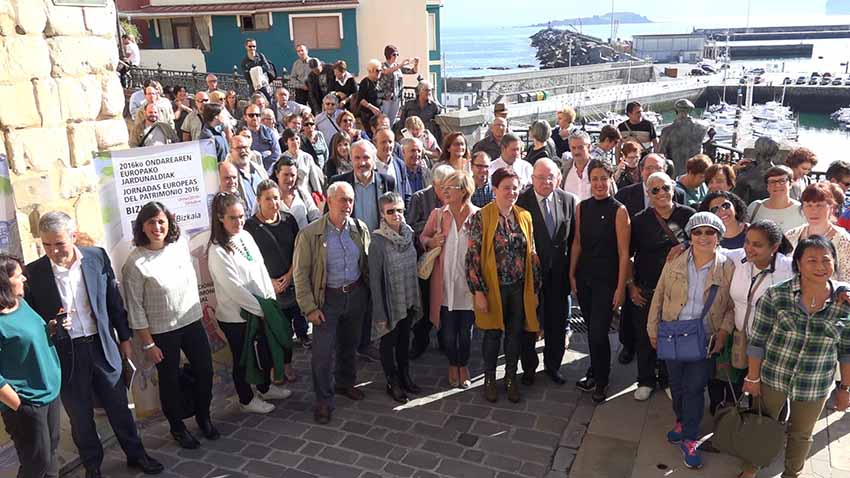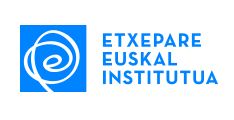Bermeo, Bizkaia. Under the slogan "Etxetik Kanpo: Migration and Cultural Heritage,” the provincial deputy of Euskara and Culture form the Provincial Government of Bizkaia, Lorea Bilbao, presented the program for the European Heritage Days yesterday in Bermeo, including various activities of dissemination of the historical relationship between Basques and Icelanders.
“Bizkaia and Iceland united to share a common past: the relationship between the Basques and the local population of Northeast Iceland in the 17th Century. In addition, this edition has given the communities a greater role,” Lorea Bilbao said. “This year the Provincial Government has especially wanted to invite the citizenry to actively participate, not only by attending, but also in managing the program of activities, choosing them and organizing them. With this, we hope to work together with the new orientations provided by the Council of Europe to European States and to advocate a progressive democratization of the concept of Cultural Heritage.”
Basques in Iceland
The Arrantzaleen Museoa (Fishing Museum) of the Provincial Government of Bizkaia has organized an exhibit for the month of October “Basques in Iceland. Fishing and Whaling and Cod,” curated by Xabier Armendariz who will disclose unknown details of the presence of Basque fishermen in these Northern lands. Their relationship with the locals, especially throughout the 16th and 17th centuries, in the commercial point of view as well as the human one. Meetings, and discoveries, sometimes bloody ones, like the killing of Basques in 1615 that illustrates their shared common history, whose memory and cultural influence has been kept alive until now, in areas as diverse as linguistics and the Icelandic traditional attire.
Magnus Rafnsson, from the Basque Icelandic Association, will give a presentation on the interaction between the Basques and the citizens of Strandasýsla in Northwest Iceland in the 17th century. As indicated in its title, “Basques in Iceland: Reading between the Lines,” Rafnsson will try to shed some light on the tradition relations between the locals and visitors, as well as issues related to the heart, arousing curiosity about the reaction of young women living in an isolated community in the far north of Iceland to the arrival of 85 men, or how 60 sailors were received at local farms after being shipwrecked.
The Basque Language Academy, Euskaltzaindia, has organized a conference “Euskararen aztarnak Islandian,” (Traces of the Basque langage in Iceland) by Gidor Bilbao as part of the events, that will discuss Basque-Icelandic pidgin. This, a simplified language that developed in the 17th and 18th centuries between the two communities, and served as a way of communication between locals, and visitors, and a glossary that includes 745 Basque terms, as well as Icelandic, French and English. The presentation will show and analyze the pidgin texts trying to distinguish Basque elements as well as the rest of the terms from other languages.
The British Consulate is also collaborating and providing an opportunity to visit, in October, the “English Cemetery” as it is popularly known, an enclave of 10,000 square meters that is property of the British Crown in the Biscayan city of Loiu. Created in 1926 in response to the necessity (for English people and others who weren’t Catholic), this town is heir to the cemetery that has been called “The English Cemetery” since the 17th century, in Bilbao, next to the river and witness to the intense relationship between Great Britain and Bizkaia in recent centuries.
Nearly 300 activities in Bizkaia
The Provincial Government of Bizkaia ('Bizkaiko Foru Aldundia'), is joining in the initiative supported by the Council of Europe who has coordinated this program for the last 16 years. In this sixteenth edition there will be 63 town halls participating, 17 official institutional entities, 17 museums and nearly 50 cultural associations. Among everyone, a program of nearly 300 activities has been designed including guided visits, conferences, exhibits, trade demonstrations, fairs, food, film, historic recreations, music, dance, sports, scientific conferences and university seminars on the Diaspora, or migration and population movement from Prehistory to current day. .
In addition, and in keeping with the theme chosen for this year, there will be groups of immigrants also participating, people who arrived during the industrial boom (regional houses), as well as those who have come more recently from other parts of the world (Lipovenos Russians, Mexico Lindo, Saharawi Diaspora). Also those entities that bring Bizkaia to distant cultures, but with the presence in Bizkaia today, as is the case of the program organized by the Chinese Institute of Bilbao, the Gardens of Kyoto, etc.
More information, here






 Send to a friend
Send to a friend Add comment
Add comment








